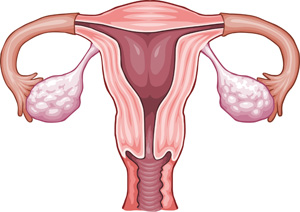Uterus Infection
 Some Facts About A Uterus Infection
Some Facts About A Uterus Infection
A uterus infection can be serious and very painful, but the exact cause can be quite difficult to determine. In many cases, the uterus or the uterine lining becomes infected after a woman has a baby, a condition known as endometritis. Pelvic Inflammatory Disease, or PID, is another type of uterus infection. PID can happen any time – not just after childbirth – and it can affect any woman – not just those who are or have been pregnant.
|
|
Symptoms of Uterus Infection
The symptoms of an infected uterus are similar to those of other types of infections: fever, headache, rapid heart beat. With a uterine infection, however, there are additional symptoms such as very heavy vaginal bleeding, which can be during menstruation or on its own, along with an unpleasant odor and severe pain in the abdomen, especially when touched. Pain during or after sexual intercourse can also be an indication that an infection is present in the uterus, especial when PID is the cause.
When it occurs after childbirth, an infection of the uterus usually becomes apparent just a day or two after the baby is born. Endometritis is very uncommon in women who have a child naturally, but the risk for this type of infection increases up to 30 percent for women who give birth via Caesarean section.
|
|
Causes of Uterus Infection
Certain situations can lead to an infection of the uterus, including going through a long labor, multiple internal examinations during labor and having the water broken for more than 24 hours. There is a certain infection of the uterus that occurs when a small piece of the placenta is left in the uterus after childbirth. This type of uterine infection may take longer to develop than other types of infection, because the remaining placental tissue requires a few days to develop into a full-blown infection in the uterus. An infection caused by leftover placental tissue is fairly rare.
In some cases, an infected uterus comes about after exposure to bacteria that is found in the hospital, or the damaging bacteria can be a germ the woman was already carrying in her own body. It is difficult to determine the exact cause of uterine infection, but it can frequently be a combination of different bacteria. Sometimes the cause of a uterine infection is never figured out, but women who are anemic tend to have more infections, perhaps because of the decrease in their resistance level.
Problems with Uterus Infections
An infected uterus is a relatively serious problem, and it must be treated quickly and completely. If an infection of the uterus is not treated, it can move into the bloodstream and cause the infection to pass into other parts of the body. In extreme cases, an untreated uterine infection can lead to fertility problems and even death, if the infection passes to the blood.
Treatment for an Infected Uterus
Most of the time, an infected uterus is treated with antibiotics. If the infection occurs after childbirth, the treatment will usually begin in the hospital with strong antibiotics. In some cases, the doctor will automatically prescribe antibiotics to a woman who has just given birth via Caesarean section, since this group of women are at higher risk for developing an infection after having a child.
For outpatient cases, usually involving PID, there are two different antibiotics that must be administered in a full course to effectively treat a uterine infection. In serious cases, hospitalization may be required in order to properly treat an infected uterus, and that is because of the drastic – and sometimes deadly consequences of improper treatment for a uterus infection.